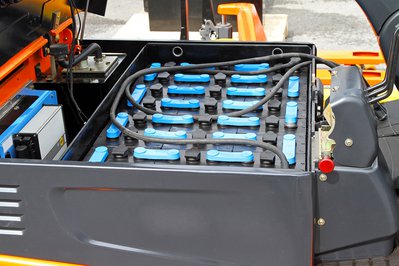
Most of us are careful about the way we treat our precious cell phones, taking care to ensure that the batteries last as long as possible (even though cell phone batteries are designed so overcharging isn’t a worry).
However, when it comes to forklift batteries—which cost so much more and are crucial to keeping a company running—most people may not know how to maintain them optimally, or may be actively destroying the batteries through incorrect business processes.
It’s not intentional, of course. Many times, it is due to a lack of knowledge. After all, forklift batteries are electro-chemical devices and their maintenance can depend upon many factors, such as type and usage. Maintaining them properly is a lot more complex than just plugging your phone into a charger.
Even the employees in charge of maintaining forklifts often don’t realize that bad power maintenance can shave 1-3 years off the life of your battery—and those lost years negatively impact your warehouse’s uptime and cost you money. After all, a battery is often 30% of a forklift’s cost, so it’s not a minimal investment.
If you want to have a forklift power disaster at your warehouse (and we’re assuming you don’t), here are the top five mistakes to make…
Improper Charging Practices: The biggest misstep almost all forklift operators commit is charging when it’s most convenient for the forklift operator, rather than when it is required to best maintain the equipment. For example, operators can forget to plug up during breaks, lunch or when they leave for the day. Ultimately, a charging schedule needs to be set up at the time a power system is installed. It will differ depending on the operation of your facility and what type of charging system you select/require—i.e. battery swap, opportunity charging or fast charging.
All batteries have a limited number of charge cycles before their battery capacity begins to diminish. For most industrial batteries, this number hovers at around 1,500 charge-cycles, which often equates to about five years of typical use. Setting up a charging schedule for your batteries pays off with a longer lifespan, saving significant cash.
Not Watering Batteries Properly: To optimally maintain your forklift power, it’s very important that you take each step at the correct time. For example, there’s a small window to water a battery. If you water before a battery is fully charged, there will likely be a spill and you’ll lose some sulfur, which throws off the electrolyte balance. This will make the voltage wrong—and if you repeat this process over and over, the battery will significantly degrade. Not to mention, you’ll have acid all over your facility! The correct timing is 1- 3 weeks, depending on a number of factors: temperature, type of utilization, and temperature. Setting up a routine inspection to monitor a forklift battery’s water levels is important.
Using the Wrong Charger: Many companies end up using a charger that’s too big or too small because it’s on hand or they have it from an older type of battery. This often hurts the battery because the charge was designed to work with a specific size of battery.
In addition, there are still companies that utilize outdated technology, like the (surprisingly common) mechanical chargers (ferro and SCR) that were designed in the 1940s. These have a tendency to overheat the batteries, utilizing more water, as well as increasing the temperature of the batteries which damages them over time. The cumulative effect is to shorten the battery’s life significantly.
Not Planning for Extreme Temperatures: Lead-acid batteries work best when they are operating in temperatures between 30 and 90 degrees Fahrenheit. Anything above or below and the batteries will be affected adversely. For example, a battery operating ideally at 80 degrees F can deliver only 50% of its power at 0 degrees F.
It’s ideal to charge in a temperate range, usually 50- 86 degrees F. If your forklift regularly operates and charges in extreme temperatures, like a freezer or during the summer in the deep South, we recommend you work with application engineers to design a power system that can better meet those needs.
Having the Wrong Number and Size(s) of Batteries: We admit that this factor isn’t as obvious as many of the others. Many companies buy a certain number because either that’s what they’ve always done or they want them “just in case.” As a result, many companies believe their batteries have a long life when they actually own an excessive amount with shorter lifespans.
Leaders of demanding operations often understandably subscribe to the “just in case” reasoning. Who doesn’t want redundancy and backups in case of issues? But in a world of competing resources where cost per pallet matters more and more, this is an expensive way to operate—especially when you can be precise and avoid the need for this. If you’re worried about meeting your company’s seasonal demands, these can be handled more efficiently using charging algorithms and ensuring you have an appropriately sized battery system. The takeaway is that the correct number of batteries, maintained properly and charged according to your needs, gives optimal lifespan and costs a great deal less than excess batteries
While all five of these mistakes definitely take a toll, the biggest mistake is not looking at your forklift power in a strategic way and not treating it like an ecosystem.
As we learned from the five issues above, each individual part of a power system is important, and the most crucial lesson is that all parts need to work together to meet your company’s requirements. When you understand that your forklifts and their batteries form a set of processes and a system, you can begin to tackle the waste in that process or system. You will be to ensure that not only do the components last the optimal amount of time, but also that your company runs smoothly with higher uptime.


 Ryan Lynch
Ryan Lynch
